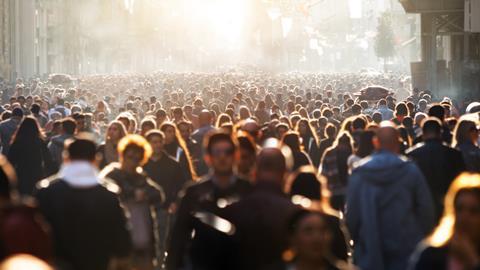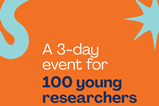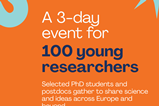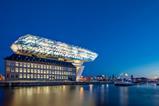By removing physical barriers and inhibiting protein production, Nijmegen researchers were able to experimentally demonstrate that macromolecular crowding does indeed play a role in mitochondria. But whether that role is positive or negative varies by situation and process.
Specific organelles in eukaryotic cells, mitochondria, produce ATP and thus act as the cell’s power plants. Mitochondria, like the rest of the cell, are packed with proteins. This causes macromolecular crowding in the cell; the phenomenon in which a high protein concentration reduces the diffusion rate of proteins and other (macro)molecules. ‘Macromolecular crowding affects all reactions in an indirect way, by changing the environment in which those reactions take place,’ says Werner Koopman, associate professor at Radboudumc in Nijmegen and specialized in mitochondrial diseases and bioenergetics.
Simply put: Large molecules physically occupy more space, leaving less room for movement. For example, the likelihood of two reacting molecules running into each other decreases. Crowding effects in the cytosol have already been experimentally demonstrated, but for mitochondria we could only make assumptions. ‘Most proteins in mitochondria are bound to the inner membrane and thus do not contribute to any crowding effect in the mitochondrial matrix fluid,’ Koopman said. ‘The existence of crowding had been postulated before, but has never been demonstrated in quantitative experiments.’
Mobility
Koopman and co-investigators Merel Adjobo-Hermans (Radboudumc) and Wouter den Otter (Universiteit Twente) decided to find this experimental evidence. ‘This is important evidence in view of the interpretation of results obtained under test tube conditions, without crowding, since these will deviate greatly from the natural situation.’
The team focused on the mobility of the Green Fluorescent Protein (GFP) fusion complexes of different sizes within mitochondria. Koopman: ‘In theory, the mobility of large proteins is inhibited more than that of small proteins, but our experiments showed that this inhibition increased disproportionately as a function of protein size.’ This is a typical macromolecular crowding effect.
However, the inner membrane of mitochondria is strongly folded, creating physical barriers that slow down the diffusion of proteins. To reduce this effect, the antibiotic chloramphenicol (CAP) was used. ‘With that you reduce the number of cristae [folds, red] and therefore you would expect a faster diffusion,’ Koopman says. ‘But we saw the exact opposite. Administration of CAP caused the GFPs to move even slower.’
Anchor points
The fluid becomes more viscous once CAP is administered, but why is that? ‘CAP inhibits the formation of mitochondrial proteins,’ Koopmain explains. ‘But mitochondria use many proteins from the cytosol. For example, only seven subunits of Complex I, which consists of 45 subunits, are produced by mitochondria. These seven act as anchor points to which the other 38 attach, but if the mitochondrial subunits are missing, you get a lot of floating (sub)complexes. As a result, the amount of macromolecules in the solution increases.’
The big question remains: What is the effect on mitochondrial function? Is there perhaps a link between the occurrence of crowding and certain mitochondrial diseases? ‘No, you cannot make the one-to-one connection that healthy or sick mitochondria are directly related to altered crowding.’ However, it is clear that you have to take crowding into account when designing an experiment or interpreting experimental results. Koopman: ‘These molecules behave very differently outside the mitochondrion, you have to take that into account. Also when you are thinking about applications in synthetic biology. Crowding has an influence, positive or negative, and we cannot ignore that.’


















Nog geen opmerkingen